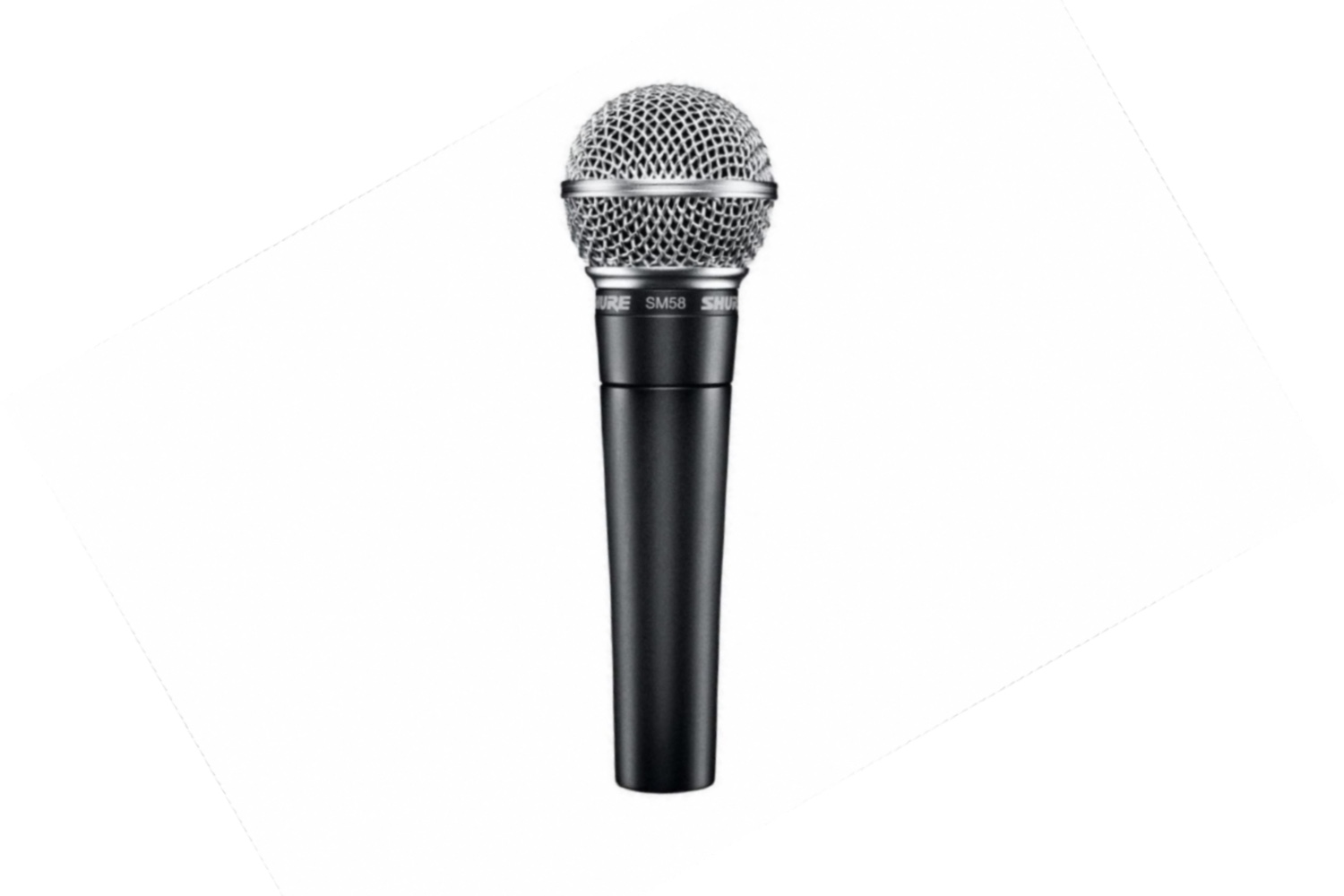Distributed by: Jands | Expect to pay: $229
A microphone that needs absolutely no introduction would shurely (pun absolutely intended) be the Shure SM58. A dynamic moving coil mic with such a rich history both in its mechanical design and its wide range of applications and users – it has to be said, this was a joy to review.
Arguably the most popular and widely used live vocal microphone of all time, when most people think of, describe, or even draw a live vocal microphone, it’s the SM58. With a history of almost 55-years, the SM58 is revered by both musicians and engineers alike. So what makes it so special and why in 2021 are we still reviewing , what is the most famous microphone of the last 50 years? The truth is it still remains largely unsurpassed as a stage microphone and here’s why.
Firstly a bit of history – the SM58 was first introduced in 1966, featuring the Unidyne III design (being the grand child of the Unidyne I, originally designed in 1937). The Unidyne I was the first unidirectional, moving coil microphone with a single capsule, quite the feat for its day and forever stamping into the history books. The Unidyne I made its way into the market in the Model 55 microphone, released in 1939. This mic went on to become famously used by Elvis Presley, who used the mic so much that it became affectionately known as ‘The Elvis Microphone‘.
With numerous other mics being released by Shure in the years that followed (including the ubiquitous SM57), Shure was well on the path to becoming the largest microphone manufacturer in the world, but nothing could prepare them for what happened next with the release of the SM58 in 1966. This relatively simple looking microphone would propel the brand into the stratosphere.
Originally pitched at the studio and radio markets it was on the stage where the mic found its natural habitat. Its bombproof all-metal enclosure and ferociously rugged metal rounded windscreen made them an instant hit for engineers, venues and production houses, alleviating fears of failing microphones in even the toughest and most demanding of live environments.
Racing forward to 2021 and the SM58 is still as popular today as it was in decades past. But the question must be asked, is this due to the age old “if it ain’t broke don’t fix it” type mentality or does the SM58 genuinely live up to the standards and rigours of today’s stages and studios?
Having used the SM58 extensively both as a musician and as an engineer, I can confidently attest to its quality, with the common phrase “built like a tank” being used to describe its construction. Almost nothing can cause these mics to fail, whether it’s a mic drop (or throw) or a lead singer belting their head into it. Even dropping it from a helicopter at 200ft. Yep, that happened and it still worked. This durability is why one is likely to find models in a mic case well over 20 years old, still sounding as good as their first day out of the box (although looking rather worse for wear it must be said.)
Aside from the robust build of the SM58, what’s really important is how the thing sounds. Its humble frequency of 50Hz – 15kHz, gives a natural roll off on the subs and tops, helping keeps things in check before needing to reach for filters and EQ. There’s plenty of lower midrange weight, which can be too much for certain vocal types, but for others, helps fill out a voice and give it some more breadth; something other live vocal mics struggle to do.
Another defining feature of the SM58 is its stellar gain and feedback properties. Whether this is a product of design or a result of stage performers and console manufacturers adapting to its dominance in the space is a chicken and egg situation, whatever the magic behind it, the SM58 seems to feature a perfectly calibrated gain sensitivity – one that will always sit nicely at unity.
The other major advantage from an FOH perspective is their ubiquitousness in the field and the effect this has on performance. Almost every vocalist grows up almost exclusively on 58’s, so their understanding of proximity effect, mic distance and distance from the monitor has been acquired through the lens of the microphone’s unique frequency profile and tuning. This means that for a lot of singers, their live technique has been specifically developed to react to the SM58’s unique sensibilities, meaning a better, more natural performance.
Looking at the mics frequency response graph reveals a gentle presence boost starting at around 2kHz and rolling off after 10kHz. Despite this presence peak, the SM58 very rarely sounds harsh, but instead, full, rounded and present, pretty perfect for a vocal microphone. Its rather uniform cardioid polar pattern and great side and rear rejection is at the heart of the 58’s stellar gain before feedback properties; incredibly desirable for louder stages filled with blaring instruments and lots of foldback wedges.
Aside from vocals, the SM58 is a wonderfully diverse mic which can be used on anything from drums, percussion, guitars, horns and many other sound sources. Its natural and balanced sound
is incredibly forgiving and nicely representative of what it’s pointed in front of.
There are few microphones out there that can boast the same level of prestige and longevity as the Shure SM58. Despite the many technological developments in the mystical world of microphones over the decades since the SM58’s release, few have ever really come close to surpassing it as the industry standard live vocal microphone.
It goes without saying, no live or studio mic collection is complete without at least a couple of SM58s. As a FOH engineer, I have no doubt I will be putting a couple up this weekend. It’s inevitable.
Shure are distributed in the domestic market via Jands.

